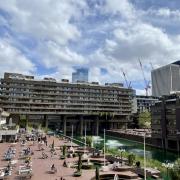
After the 2011 Fukushima nuclear accident, 1.2 million tonnes of radioactive water is lying in around 1000 tanks at the same power station after new structures were made to prevent radiation spread. Like radioactive atoms decaying into new elements, the crisis of this space sabotage is inevitably ceasing Japan’s race in development and mechanisation. With an average of 160 tonnes a day being added last year from rainwater and seeping groundwater supplies, the International Atomic Energy Agency expects existing capacity will be full by mid-2022. Japan’s current desperacy has held their aim of dumping it with intervals into the Pacific after the most harmful isotopes have been treated and removed. Many scientists have viewed this as a fine remedy as the vastness of the Pacific will dilute it soon enough, preventing much harm on ecosystems and the fishing industry.
On the contrary, Shaun Burnie from Greenpeace has said, “There are major questions as to whether it will work as planned” as 70% of the water is estimated to have to go through a secondary filter process. Greenpeace also claimed that contaminated water contained ‘dangerous levels of carbon-14’, which had the “potential to damage human DNA”. Further to the discussion, many Korean and Chinese buyers have threatened to boycott the Japanese fishing industry if the water is released into the Pacific.
In conclusion, it is essential Japan get rid of this water in multiple ways but is this the right option is what is on peoples’ minds; the long term impacts of this so-called ‘solution’ could be devastating but hidden now…



























